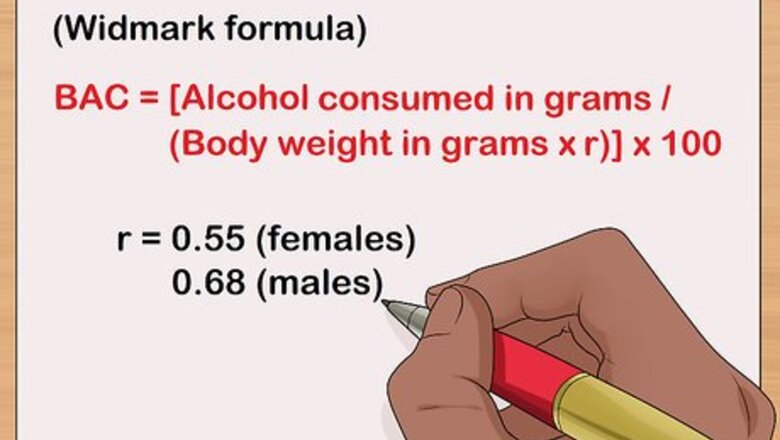
views
Calculating BAC Using the Widmark Formula
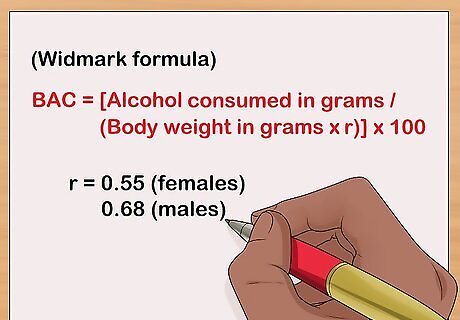
Find your formula. The simplified version of the Widmark formula is: BAC = [Alcohol consumed in grams / (Body weight in grams x r)] x 100. In this formula, “r” is the gender constant: r = 0.55 for females and 0.68 for males.
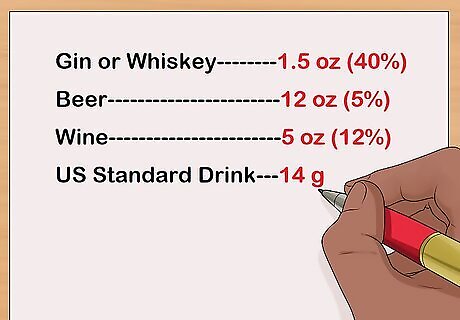
Count the number of drinks. In order to calculate BAC using the Widmark formula, you will need to count how many drinks have been consumed in a given period. To be as precise as possible, the number of drinks counted should be based on a standard drink size and alcohol content, rather than the number of glasses, bottles, etc. consumed. This is because the volume and content of drinks vary widely. The standard drink size varies from country to country and from drink to drink. In the United States: The standard drink size of an 80-proof version of a distilled spirit such as gin or whiskey is approximately 1.5 ounces. This is about forty percent alcohol. The standard drink size of a beer with a five percent volume of alcohol is twelve ounces. The standard drink size of a wine with a twelve percent volume of alcohol is five ounces. In the United States, a standard drink contains approximately fourteen grams of alcohol.
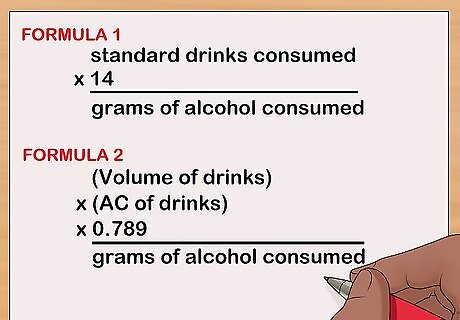
Find the alcohol dose. Once you have the number of standard drinks consumed, multiply that number by 14 to derive the alcohol dose in grams. This will give you the alcohol dose—the amount of alcohol consumed. You can also find the alcohol dose using the formula: (Volume of drinks) x (AC of drinks) x 0.789 = grams of alcohol consumed If your area has a different alcohol content in a standard drink, you will need to multiply the number of standard drinks consumed by that alcohol content in grams.
Take your body weight in grams and multiply it by the gender constant. The gender constant is 0.55 for females and 0.68 for males. If you know your body weight in pounds but not in grams, use one of the following formulas: Body weight in pounds / 0.0022046 = body weight in grams Body weight in pounds x 454 = body weight in grams A quick internet search will reveal numerous online calculators for converting pounds to grams.
Divide the alcohol consumed in grams by (body weight in grams x gender constant.). This step will give you a raw number based on the alcohol content in your body.
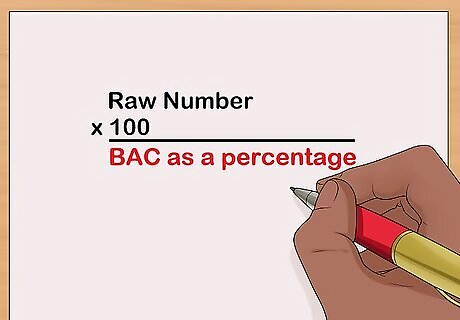
Multiply the raw number by 100. Taking the raw number in the step above and multiplying it by 100 will give you your BAC as a percentage.

Account for elapsed time. If you have been drinking over a period of time, you will need to account for the elapsed time and the amount of alcohol that your body has already metabolized by the time you calculate your BAC. To do this, use the following formula: BAC as a percentage – (elapsed time in hours x 0. 015)
Trying an Example of the Widmark Formula Calculation
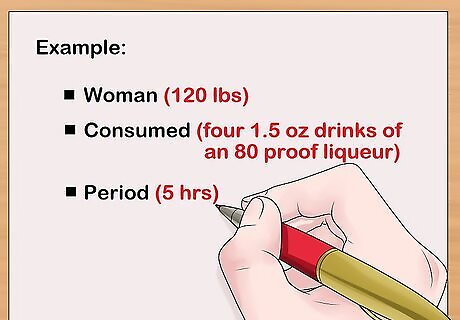
Understand the example. Imagine that a 120 pound woman consumed four 1.5 ounce drinks of an 80 proof liqueur over a five-hour period.
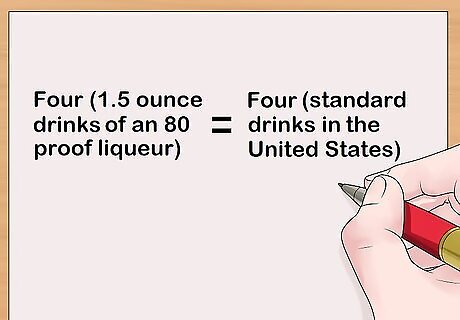
Count the number of drinks. Four 1.5 ounce drinks of an 80 proof liqueur is equivalent to four standard drinks in the United States.
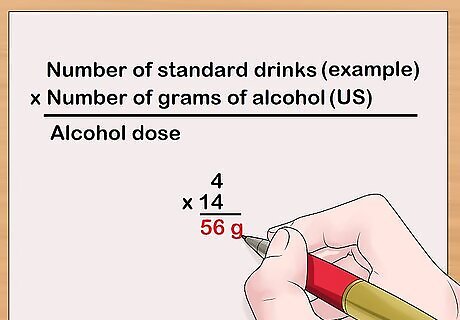
Find the alcohol dose. Multiply the number of standard drinks in this example (4) by 14 (the number of grams of alcohol in a standard drink in the United States) to find the alcohol dose, 56 grams of alcohol.
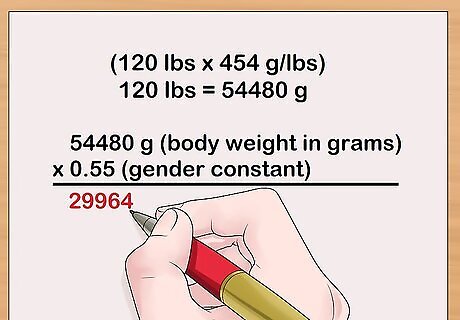
Multiply the body weight in grams and multiply it by the gender constant. 120 pounds is equivalent to 54480 grams (120 pounds x 454 grams per pound). Multiplying this by the gender constant (in this example, 0.55) = 29964
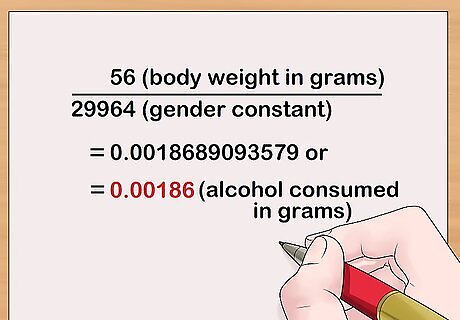
Divide the alcohol consumed in grams by (body weight in grams x gender constant.). In this example, this equals approximately 0.0018689093579 (56 / 29964). For a less exact calculation, you can round this number to 0.00186.
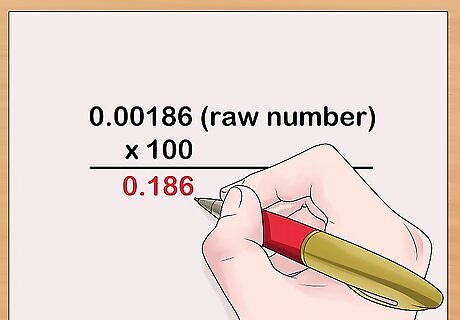
Multiply the raw number by 100. In this example, this gives the number 0.186 (0.00186 x 100). This number reflects the approximate BAC as a percentage, before accounting for elapsed time.
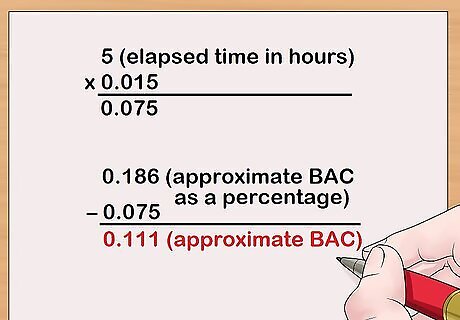
Account for elapsed time. In this example, you should first multiply the number of elapsed time in hours (5) by 0.015 = 0.075. Then, subtract this number from the approximate BAC as a percentage: 0.186 – 0.075 = 0.111. This means that the approximate BAC in this example at the end of the five hour period is 0.111.














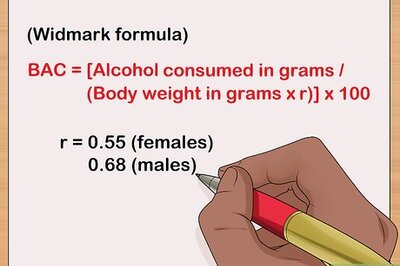



Comments
0 comment